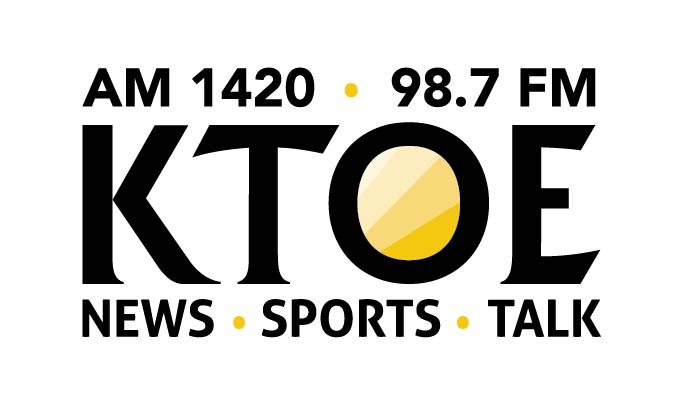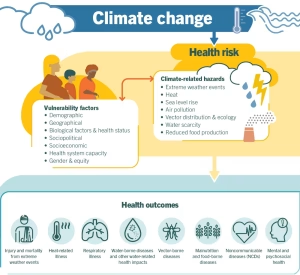Connecting sunlight and forests to curbing climate change – Clark University
.jpg?#)
Report on Albedo’s Impact on Carbon Projects and Sustainable Development Goals
Executive Summary
A recent study published in Nature Communications examines the efficacy of carbon projects in relation to the Sustainable Development Goals (SDGs), particularly SDG 13 (Climate Action) and SDG 15 (Life on Land). The research, involving 172 afforestation, reforestation, and revegetation projects, reveals that the failure to account for albedo—the amount of sunlight reflected by a surface—leads to a significant overestimation of climate benefits. This report outlines the study’s findings and their implications for achieving global sustainability targets, emphasizing the need for improved accounting methodologies to ensure the integrity of climate mitigation efforts and responsible economic practices under SDG 12 (Responsible Consumption and Production).
Key Findings and Implications for SDG 13: Climate Action
The study’s primary conclusion is that current carbon-crediting protocols are insufficient for accurately measuring contributions to SDG 13. By omitting albedo from calculations, the voluntary carbon market may be undermining genuine climate action. The analysis of projects, projected to provide nearly 800 million metric tons of CO2e mitigation, found significant discrepancies.
- Negated Climate Benefit: Over 10% of the projects are located in areas where changes in albedo may entirely negate the climate mitigation benefit from carbon sequestration.
- Reduced Mitigation: A quarter of the projects are situated where albedo effects could halve the intended climate benefit.
- Augmented Benefit: Conversely, 9% of projects, concentrated in Central America, South America, and Africa, demonstrated a positive “albedo benefit,” where increased reflectivity enhances cooling and augments the project’s contribution to climate action.
- Minimal Impact: The majority of projects are located where albedo changes are expected to be minimal.
These findings challenge the current framework for climate action, indicating that a substantial portion of efforts may be less effective than reported, thereby hindering progress toward the targets of SDG 13.
Impact on SDG 15: Life on Land and Project Siting
The research underscores the critical importance of strategic project siting for the successful implementation of SDG 15, which aims to protect and restore terrestrial ecosystems. The effectiveness of reforestation as a climate solution is highly dependent on geographic location and its corresponding impact on albedo. The study demonstrates that without scientifically-informed planning, projects intended to restore forests could have neutral or even detrimental climate effects, failing to deliver their full potential for ecosystem restoration. The development of a toolset by the Clark University research team provides land managers with the necessary resources to assess albedo impacts, enabling more effective project design that aligns with the goals of SDG 15.
Economic Considerations and SDG 12: Responsible Production
The financial implications of these findings are substantial and directly relate to SDG 12 (Responsible Consumption and Production). The report estimates that nearly half of all reforestation credits from the projects studied would not have been issued if albedo were properly accounted for. This represents a potential cancellation of approximately $8 billion in carbon credits (at an average price of $20 per metric ton). This highlights a critical flaw in the voluntary carbon market, a key mechanism through which corporations aim to achieve sustainable production patterns by offsetting emissions. Ensuring the scientific integrity of carbon credits is essential for promoting genuine corporate responsibility and preventing “greenwashing,” thereby strengthening the framework of SDG 12.
Recommendations and the Role of SDG 17: Partnerships for the Goals
To address these shortcomings and strengthen the global partnership for sustainable development (SDG 17), the researchers propose a series of actions. These recommendations require collaboration between scientific institutions, regulatory bodies, and market stakeholders.
- Integrate Albedo into Protocols: Carbon-crediting standards and registries must incorporate albedo as a key metric to accurately quantify climate benefits and prioritize projects with the greatest positive impact.
- Account for Other Biophysical Factors: Further research and tool development are needed to enable accounting for other important factors, such as evapotranspiration, which are not yet quantifiable within the market.
- Enhance Stakeholder Collaboration: Increased communication and education are necessary to familiarize market stakeholders with complex biophysical factors, fostering a more informed and effective carbon market. This multi-stakeholder approach is central to the spirit of SDG 17.
Analysis of Sustainable Development Goals in the Article
1. Which SDGs are addressed or connected to the issues highlighted in the article?
-
SDG 13: Climate Action
- The entire article is centered on climate change mitigation. It discusses carbon projects designed to “curb the effects of climate change” by removing CO2 from the atmosphere. The research investigates the effectiveness of these projects and aims to improve their climate benefits, directly aligning with the goal of taking urgent action to combat climate change and its impacts.
-
SDG 15: Life on Land
- The carbon projects examined involve “afforestation, reforestation, and revegetation.” These activities are fundamental to protecting, restoring, and promoting the sustainable use of terrestrial ecosystems, particularly forests. The study’s focus on improving the climate accounting of these projects contributes to ensuring that forest restoration efforts are genuinely effective.
-
SDG 17: Partnerships for the Goals
- The article highlights a multi-stakeholder partnership involving academia (Clark University), a non-governmental organization (The Nature Conservancy), and an international research institution (ETH-Zurich). This collaboration aims to “mobilize and share knowledge, expertise, [and] technology” (the albedo toolset) to strengthen the means of implementation for sustainable development, specifically within the voluntary carbon market.
2. What specific targets under those SDGs can be identified based on the article’s content?
-
Targets under SDG 13 (Climate Action)
- Target 13.2: Integrate climate change measures into policies, strategies and planning. The article’s core recommendation is to integrate albedo considerations into carbon-crediting protocols and project planning to “better prioritize projects with greater climate benefit.”
- Target 13.3: Improve education, awareness-raising and human and institutional capacity on climate change mitigation. The researchers explicitly suggest “collaborative communication and education with market stakeholders who may not be familiar with biophysical factors” to improve the effectiveness of the voluntary carbon market.
- Target 13.b: Promote mechanisms for raising capacity for effective climate change-related planning and management. The development of a “toolset now being used by practitioners and land managers to estimate how albedo change might affect reforestation” is a direct example of creating a mechanism to enhance planning and management capacity.
-
Targets under SDG 15 (Life on Land)
- Target 15.2: Promote the implementation of sustainable management of all types of forests, halt deforestation, restore degraded forests and substantially increase afforestation and reforestation globally. The article directly analyzes 172 “afforestation, reforestation, and revegetation projects” and seeks to improve their management and climate outcomes.
-
Targets under SDG 17 (Partnerships for the Goals)
- Target 17.16: Enhance the global partnership for sustainable development, complemented by multi-stakeholder partnerships that mobilize and share knowledge, expertise, technology and financial resources. The research itself is a product of a partnership between Clark University, The Nature Conservancy, and ETH-Zurich, which has produced and shared knowledge and a technological toolset.
- Target 17.17: Encourage and promote effective public, public-private and civil society partnerships. The article examines the voluntary carbon market, a prime example of a public-private partnership mechanism for climate mitigation, and the research collaboration represents a civil society/academic partnership aimed at making it more effective.
3. Are there any indicators mentioned or implied in the article that can be used to measure progress towards the identified targets?
-
Climate Mitigation Effectiveness
- Indicator: Metric tons of CO2 equivalent (CO2e) of climate mitigation. The article states the projects are “projected to provide nearly 800 million metric tons CO2e of climate mitigation.” The research proposes refining this indicator by accounting for albedo.
-
Albedo Impact
- Indicator: Percentage of sunlight reflected (albedo). The study uses this physical measurement to assess projects, finding that 9% showed an “albedo benefit,” while for over 10% of projects, albedo “may entirely negate the climate mitigation benefit.”
-
Project Implementation and Scope
- Indicator: Number of afforestation, reforestation, and revegetation projects. The study examined “172 afforestation, reforestation, and revegetation projects,” which serves as a baseline indicator of the scale of these activities within the voluntary carbon market.
-
Economic Value of Carbon Credits
- Indicator: Monetary value of carbon credits. The article quantifies the potential financial impact of accounting for albedo, noting it could cancel “about $8 billion of credits at an average price of $20 per tonne.”
-
Adoption of New Accounting Methods
- Indicator: Number of registry standards and protocols that account for biophysical factors like albedo. The article implies this as a key measure of progress by stating that currently, “None of the five registry standards and accompanying protocols used by these projects account for changes in albedo.”
4. Summary Table of SDGs, Targets, and Indicators
| SDGs | Targets | Indicators |
|---|---|---|
| SDG 13: Climate Action |
|
|
| SDG 15: Life on Land |
|
|
| SDG 17: Partnerships for the Goals |
|
|
Source: clarku.edu
.jpg)
What is Your Reaction?
 Like
0
Like
0
 Dislike
0
Dislike
0
 Love
0
Love
0
 Funny
0
Funny
0
 Angry
0
Angry
0
 Sad
0
Sad
0
 Wow
0
Wow
0



















































.jpg.webp?itok=0ZsAnae9#)
























